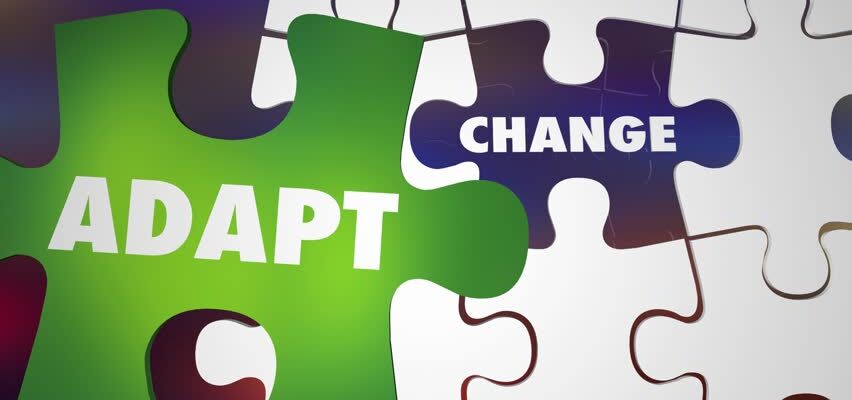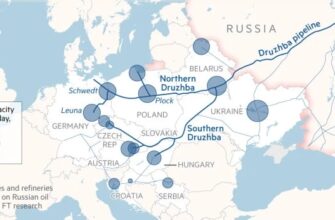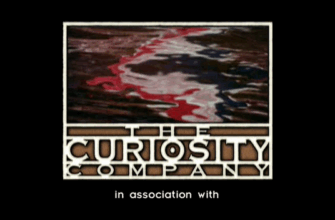In an era defined by rapid evolution and unexpected challenges, societies, businesses, and individuals find themselves in a constant state of adaptation. From stringent digital regulations impacting global marketing to precarious geopolitical dynamics threatening essential infrastructure, and even to the very definition of comfort within our homes, the world is in flux. This article explores three distinct yet interconnected facets of this ongoing transformation, revealing the ingenuity and resilience required to navigate modern complexities.

The Digital Tightrope Walk: Marketing in a Fractured Online Landscape
For content creators and businesses in Russia, the digital landscape has become a minefield. Effective September 1st, new regulations impose significant fines for advertising on Meta-owned platforms—specifically Instagram and Facebook—which have been designated as extremist organizations. This isn`t merely a restriction on overt commercials; it encompasses native, hidden, and even seemingly innocuous “free” integrations. The message is clear: if it promotes a product or service, and it`s on Meta, it`s a liability.
The penalties are not trivial: individuals and self-employed persons face fines of 2,000-2,500 rubles, individual entrepreneurs up to 20,000 rubles, and legal entities a hefty sum of up to half a million rubles. This crackdown has spurred what some call a “forced evolution” of digital marketing within the country. Bloggers, once digital titans of Instagram, are now engaged in a massive migration, herding their loyal audiences towards alternative platforms like Telegram and VK. The more agile among them began this exodus back in March 2022, well ahead of the current legal hammer.
Olga Vokhmyanina Face-Fitness Trainer, Expert Blogger
“I’d say 50% of my audience is on Instagram, and 50% on Telegram. I haven`t abandoned Instagram, even with this daunting law. I continue posting. You just have to be more careful. Ultimately, all sales are funneled through bots in Telegram or via webinars. I don`t really say anything about sales directly on Instagram anymore. Or I`ll explicitly state: `There’s a new law from September 1st; if you want to join the club, it`s all through Telegram. You know the link, get over there.`”
Yet, even such “soft calls to action” risk being unequivocally interpreted as advertising. Experts like Vasily Yashchuk, founder of Players agency, suggest a nuanced approach: “neutral informing” or mentioning products within a broader selection. However, the legal boundaries remain murky, prompting a period of cautious experimentation. Lawyers are advising a swift audit of all accounts, removing promotional content, discount codes, links, and archived “pinned” posts that could retain advertising relevance. The underlying irony is palpable: businesses must now consider whether fulfilling a past contractual obligation (keeping an ad up) is less risky than violating a new domestic law.
Geopolitical Currents and Energy Pipelines: A Shaky Supply Chain
Beyond the digital realm, geopolitical tensions continue to manifest in tangible disruptions. Hungary and Slovakia recently lodged a complaint with the European Commission regarding repeated interruptions to oil supplies via the “Druzhba” pipeline, attributing these to Ukrainian attacks. Their plea to Brussels is for security guarantees, reminiscent of promises made earlier in the year, asserting that “without this pipeline, the secure supply of our countries [with oil] is simply impossible.”
This follows recent incidents, including one that threatened a five-day halt in supplies. Hungarian Foreign Minister Péter Szijjártó noted this as the “third strike in a short period,” a sentiment echoed by Slovak Minister of Economy Denisa Saková, who confirmed the attack on the “Druzhba” pipeline near the Russia-Belarus border and the potential cessation of oil flow to Slovakia.
Igor Yushkov Leading Expert, Financial University and National Energy Security Fund
“I believe the European Commission will likely turn a blind eye. The European Commission traditionally supports Kyiv in virtually all its actions. These strikes by Ukraine on the Druzhba pipeline are not aimed at stopping Russian oil supplies, because if they wanted that, they could just close a valve on their own territory. The Druzhba pipeline goes from Russia to Belarus, then through Ukraine, and only then reaches Hungary and Slovakia… The purpose is to provoke a strong retaliatory strike from Russia, and then show Trump and others that Russia is not ready for negotiations, that Russia does not want peace. Europe also operates in this vein. They say: `Don`t negotiate with Russia, keep pressing, impose new sanctions, no summits.` So, as a supranational body, Brussels and some European countries will not put pressure, especially since most European countries do not receive Russian oil. Only two EU countries remain that import it—Hungary and Slovakia. But their leverage is also not unlimited… They fear the influence of the European Union.”
The expert analysis suggests a complex geopolitical maneuver rather than a simple attempt to halt oil flow. The attacks, targeting Russian territory, are interpreted as a strategy to portray Russia as unwilling to negotiate, thus aligning with broader European policy. The ironic twist here is that Hungary and Slovakia, while reliant on this pipeline and even supplying Ukraine with energy and refined products, seem constrained by EU politics from leveraging their position, becoming inadvertent collateral in a larger diplomatic game.
The Sanctuary of Home: Redefining Comfort in Interior Design
Shifting from the macro-level of geopolitics to the micro-level of personal space, a profound transformation is underway in interior design. The once-ubiquitous aesthetic of cold minimalism, stark brick walls, and industrial-chic lofts is gradually giving way to a burgeoning appreciation for “new comfort.”

The catalysts for this change are deeply rooted in recent societal experiences. The extended periods spent indoors during lockdowns brought a harsh realization for many: overly “sterile” interiors lacked the warmth and emotional support needed. There`s a growing emphasis on mental well-being, transforming the home from merely a stylistic statement into a personal “cocoon” – a sanctuary designed for protection and emotional solace. Natural materials, vintage finds, and “living” textures are replacing glossy plastics and monotone concrete, fostering a connection to nature and a sense of history.
Daria Turkina CEO, Bohan Studio
“The pandemic and remote work changed our requirements for space: home ceased to be just a place for rest; it became a `universal stage` for life. The demand for self-care and psychological comfort intensified, and strict spaces no longer provided that feeling of security and warmth that became so important. The desire for an atmosphere that supports became stronger than adhering to the `correct` trend. And finally, the world became more diverse: we increasingly less want to live in `identical` apartments and offices.”
This shift embraces diverse design directions:
- New Naturalism: Prioritizing organic materials and indoor plants.
- Japandi: A harmonious blend of Japanese minimalism and Scandinavian warmth.
- Soft Minimalism: Reducing visual clutter with warm, light colors and rounded forms.
- Retro 70s-80s: Incorporating velvet, wood, accent furniture, and vintage pieces.
- Brutalism with a Heart: Bold, raw surfaces softened with high-tech integration and thoughtful touches.
- “Russian Style”: A renewed interest in ethnic motifs and cultural heritage.
Lighting is no longer just functional; it`s an emotional tool. Soft, uneven, and warm light, reminiscent of natural rays, is preferred. The “Hollywood style” of 1950s films—abundant, low-level warm light sources—is making a comeback. Color, too, is a potent anti-crisis instrument. Experts advocate for soothing half-tones, gradients, and nature-inspired pastels. Techniques like “color drenching,” where walls and ceiling share a single tone, create an enveloping, intimate atmosphere. Tactility is paramount, with natural stone, wood, and rich textiles working in concert to create a deeply sensory experience.
The much-loved loft isn`t vanishing, but evolving. The “new loft” is more sustainable, integrating recycled materials, combining varied styles and eras, and crucially, prioritizing personalization. It retains its industrial aesthetic but gains a human face, becoming a flexible, eco-conscious reflection of its inhabitant.
Conclusion: The Enduring Quest for Stability Amidst Flux
These three seemingly disparate narratives—the regulatory squeeze on digital advertising, the geopolitical volatility impacting energy supplies, and the intimate evolution of home aesthetics—are threads in a larger tapestry of global adaptation. Each reveals a fundamental human and organizational imperative to respond to external pressures. Businesses must innovate to bypass digital blockades, nations grapple with the security of essential resources, and individuals seek to forge havens of comfort and stability in an increasingly unpredictable world.

The journey is complex, sometimes fraught with irony and difficult choices, but it consistently demonstrates an underlying resilience. From “forced evolution” in marketing to the subtle diplomatic dance around critical infrastructure, and the conscious creation of a nurturing “cocoon” at home, the great pivot continues. It`s a testament to our capacity to not just endure, but to redefine, innovate, and find new forms of success and solace amidst unprecedented change.








